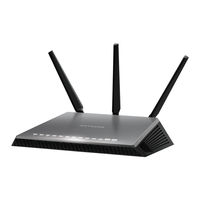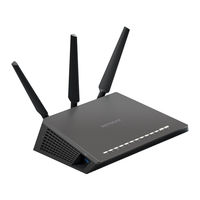NETGEAR Nighthawk D7000 Wireless Router Manuals
Manuals and User Guides for NETGEAR Nighthawk D7000 Wireless Router. We have 4 NETGEAR Nighthawk D7000 Wireless Router manuals available for free PDF download: User Manual, Quick Start Manual, Setup Manual
NETGEAR Nighthawk D7000 User Manual (313 pages)
AC1900 WiFi
VDSL/ADSL
Modem Router
Brand: NETGEAR
|
Category: Wireless Router
|
Size: 5.45 MB
Table of Contents
Advertisement
NETGEAR Nighthawk D7000 User Manual (293 pages)
Nighthawk AC1900 WiFi VDSL/ADSL Modem Router
Table of Contents
NETGEAR Nighthawk D7000 Quick Start Manual (23 pages)
Nighthawk AC1900 WiFi VDSL/ADSL Modem Router
Brand: NETGEAR
|
Category: Network Router
|
Size: 2.78 MB
Table of Contents
Advertisement



